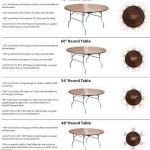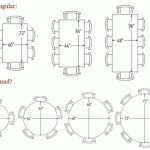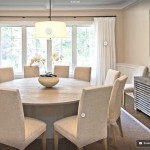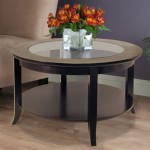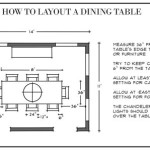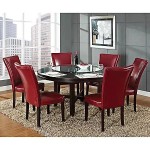How To Use A Plastic Tablecloth As A Backdrop In Weddings
Weddings often necessitate creative and cost-effective solutions for decor. One such solution involves repurposing a common item: the plastic tablecloth. While typically associated with casual gatherings, a plastic tablecloth, when utilized thoughtfully, can serve as an economical and surprisingly effective backdrop for various aspects of a wedding, from photo booths to ceremony accents. This approach demands careful planning, attention to detail, and an understanding of how to transform a utilitarian object into a visually appealing element of wedding decor.
The primary advantage of using plastic tablecloths as backdrops lies in their affordability. Weddings can be expensive, and decor often contributes significantly to the overall budget. Plastic tablecloths are considerably cheaper than fabric backdrops, professional rentals, or custom-designed installations. This makes them a viable option for couples seeking to minimize expenses without sacrificing visual appeal entirely. Furthermore, plastic tablecloths are easily accessible; they can be purchased in bulk from party supply stores, online retailers, or even grocery stores, simplifying the procurement process.
Beyond cost, plastic tablecloths offer a degree of versatility. They are available in a broad spectrum of colors, allowing for customization to match the wedding's theme and color scheme. Some tablecloths even feature patterns or textures, adding another dimension to the backdrop. Their lightweight nature also makes them easy to handle and install, requiring minimal labor or specialized equipment. This characteristic can be particularly beneficial for DIY weddings or venues with limited setup time.
However, the use of plastic tablecloths as backdrops is not without its challenges. The material's inherent properties – its thinness, tendency to wrinkle, and potential for tearing – must be carefully addressed to achieve a polished and professional look. Without proper preparation and installation, a plastic tablecloth backdrop can appear cheap and detract from the overall aesthetic of the wedding. The key to success lies in mitigating these drawbacks and maximizing the material's potential.
Preparation and Material Selection
Prior to installation, thorough preparation is crucial. The first step involves selecting the right type of plastic tablecloth. Opt for heavier-gauge plastic whenever possible. Thicker plastic is less prone to tearing and wrinkles, resulting in a smoother and more durable backdrop. While thinner tablecloths might be tempting due to their lower price point, they are more likely to create a flimsy and unprofessional appearance. Consider the overall color scheme and choose tablecloths that complement the wedding's aesthetic. Darker colors tend to conceal imperfections better than lighter ones. Metallic or iridescent plastic tablecloths can add a touch of glamour, but they also tend to highlight wrinkles and imperfections, requiring extra attention to detail during installation.
Once the tablecloths are selected, carefully unpack and inspect them for any tears or damages. Ironing plastic tablecloths is generally not recommended, as the heat can melt or warp the material. Instead, consider hanging the tablecloths for several days prior to the wedding to allow the wrinkles to naturally release. Alternatively, a garment steamer can be used with caution, testing a small, inconspicuous area first to ensure the plastic does not react negatively to the heat. Use the steamer from a distance and avoid prolonged exposure to prevent damage.
To enhance the visual appeal, consider layering multiple tablecloths of different colors or textures. This technique can add depth and dimension to the backdrop, creating a more interesting and sophisticated look. For instance, a solid-colored tablecloth can be layered over a metallic or patterned tablecloth to create a subtle and elegant effect. Experiment with different combinations to find the most visually appealing arrangement.
Finally, gather all necessary tools and materials for installation, including scissors, measuring tape, tape (painter's tape is recommended to avoid damaging walls), clamps, and any additional decorative elements such as string lights, fabric swags, or floral arrangements. Having everything readily available will streamline the installation process and minimize potential delays or complications.
Installation Techniques
Proper installation is paramount to achieving a polished and professional-looking plastic tablecloth backdrop. There are several methods for securing the tablecloths, depending on the venue and the desired aesthetic. One common approach involves using painter's tape to attach the tablecloths to a wall or other flat surface. Painter's tape is gentle and less likely to damage paint or wallpaper compared to other types of tape. Start by measuring and marking the desired height and width of the backdrop. Then, carefully align the tablecloths and secure them to the surface, ensuring a smooth and even finish. Use multiple strips of tape to prevent the tablecloths from sagging or tearing.
Another option is to use clamps to attach the tablecloths to a backdrop stand or frame. This method is particularly useful for creating larger backdrops or for venues where taping to the walls is not permitted. Secure the clamps evenly along the top edge of the tablecloths, ensuring that the weight is distributed evenly. Adjust the height and tension of the tablecloths to create a smooth and wrinkle-free surface. This method allows for greater flexibility in terms of backdrop size and configuration.
For a more elaborate backdrop, consider creating a draped effect by gathering and securing the tablecloths at various points. This technique can add texture and visual interest to the backdrop, creating a more dynamic and sophisticated look. Use fabric swags or ribbons to gather the tablecloths and secure them to the backdrop stand or frame. Experiment with different draping techniques to find the most visually appealing arrangement. This method requires more time and effort but can result in a stunning and memorable backdrop.
Regardless of the chosen installation method, it is essential to work carefully and methodically to minimize wrinkles and imperfections. Take your time and adjust the tablecloths as needed to achieve a smooth and even finish. Enlist the help of friends or family members to expedite the installation process and ensure that the backdrop is properly secured.
Enhancements and Decorative Elements
To elevate the look of a plastic tablecloth backdrop, consider incorporating additional decorative elements. String lights are a versatile and affordable option that can add warmth and ambiance to the backdrop. Drape the string lights across the tablecloths or weave them through the fabric to create a magical and romantic effect. Choose string lights with warm white or soft colors to complement the wedding's theme. Battery-operated string lights are particularly convenient, as they do not require access to power outlets.
Flowers and greenery can also be used to enhance the backdrop. Attach floral arrangements or garlands to the tablecloths to add a touch of natural beauty. Fresh flowers are ideal, but artificial flowers can also be used for a more cost-effective and durable option. Choose flowers that complement the wedding's color scheme and style. Consider creating a floral arch or frame around the backdrop to create a focal point.
Fabric swags or ribbons can be used to add texture and dimension to the backdrop. Drape the fabric swags across the tablecloths or tie them in bows to create a more elegant and sophisticated look. Choose fabrics that complement the wedding's color scheme and style. Consider using different textures, such as chiffon, satin, or lace, to add visual interest.
Personalized banners or signs can also be incorporated into the backdrop. Create a custom banner with the couple's names or wedding date, or use a pre-made sign with a romantic quote or message. This adds a personal touch to the backdrop and makes it more memorable. Ensure that the banner or sign is securely attached to the tablecloths and that it does not detract from the overall aesthetic.
By incorporating these enhancements and decorative elements, it is possible to transform a simple plastic tablecloth backdrop into a stunning and memorable focal point for a wedding. The key is to be creative, resourceful, and attentive to detail.
In conclusion, the use of plastic tablecloths as wedding backdrops presents a viable and budget-friendly option for couples seeking to add visual interest to their celebrations. Careful planning, thoughtful material selection, meticulous installation, and creative embellishments are key to transforming a humble item into a noteworthy decorative element. The success of this endeavor hinges on a commitment to detail and a willingness to experiment with various techniques and enhancements.

Photo Booth Backdrop Makoodle

Photo Booth Backdrop Using Plastic Tablecloths Monica Lerma

Diy Plastic Tablecloth Backdrop With Curtain Rods

Wedding Candy Backdrops This Looks Easy Enough To Make And I Even Like The Table Cloths

Diy Plastic Tablecloth Backdrop Created By New Era Wedding Event Planning

Diy Backdrops Using Plastic Tablecloths Photography Backdrop

Diy Backdrop Tablecloth Inexpensive Backdrops

Valentines Photo Backdrop Made With Rolls Of Plastic Tablecloth And Hanging Conversati Baby Shower Booth Valentine

15 Rainbow Party Ideas To Make Your Shine

Lace Look Banquet Roll Table Cover Plastic Tablecloth Overlay 3 Sizes Weddings Anniversaries Luncheons Teas Showers
Related Posts


